REVIEW – Eagle Industries MAR-CIRAS
PRODUCT: MAR-CIRAS (aka Eagle Marine in Australian service) Releasable Armour Carrier
MANUFACTURER: Eagle Industries
REVIEW NOTES:
I have had a very limited exposure to combat body armour (CBA) during my service. In fact, I’ve only worn it once for an extended period during a dog and pony show many years ago. At the time, I was a little bit rushed, and was worried about more important priorities to put much thought towards it at the time. So to be honest, I have absolutely no idea about this stuff. I’m approaching this review from first principles, with as much of an open mind as possible.
If I am incorrect on any details or concepts, please, feel free to educate me. I look forward to any insights you can provide.
I feel like I’m playing dress-ups with this one, since unlike most of my reviews, not a lot of field work has been conducted with this rig. Since I’ve been pretty ill lately, I’ve been unable to do a great deal of physical work to see how the rig behaves on my body.
This rig was kindly donated by Military Gear for me to review for a primarily Australian market who may not have had much exposure to such items other than what is available by general issue by the ADF. As such, I will be returning it after this review, since I REALLY have no need for something like this.
This will however, be a long term review, since I’ll be using this rig to test wear with various rucksacks that will be coming into my possession for review later down the track.
In addition, since body armour is a controlled item (requiring permits to acquire and own, similar to firearms) down under in the nanny state, I’ve had to use a replacement simulated soft armour and rifle plate replacement material. During my research, a JPEG image of BALCS cut soft armour was found during a search of Lightfighter.net, where I took that image to a printshop to be printed in full size to be used as a template for my soft armour simulacrum: carpet flooring material. I went for the thickest and densest carpet I could find. This was the best material I could find that would match the approximate flexibility, density and general behaviour of Kevlar. The story about how I had to explain what I was doing to incredulous carpet salesmen is probably best for another time.

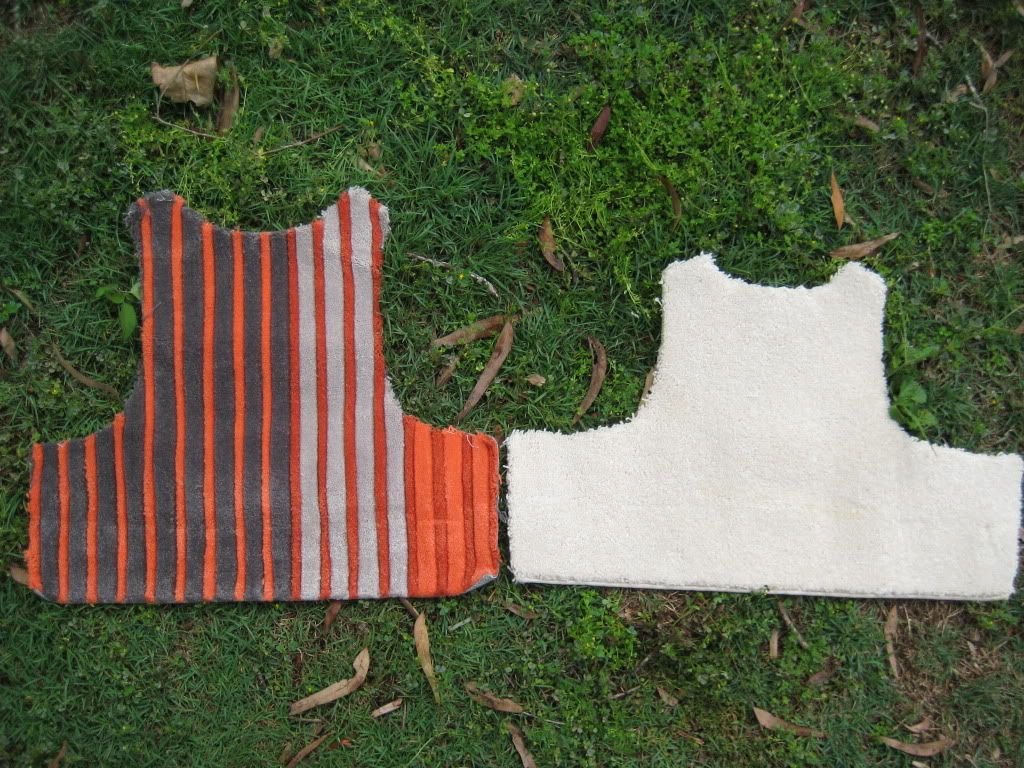
For rifle plates, another search revealed the dimensions and weights. An order was placed with an airsoft toy company for injection molded plastic rifle plates. These were then filled with sand, and sealed with epoxy glue. Approximate weight is about 2.5kg’s (approx. 5.5lbs) per plate, which according to another search on Lightfighter.net is equivalent to a ceramic plate.
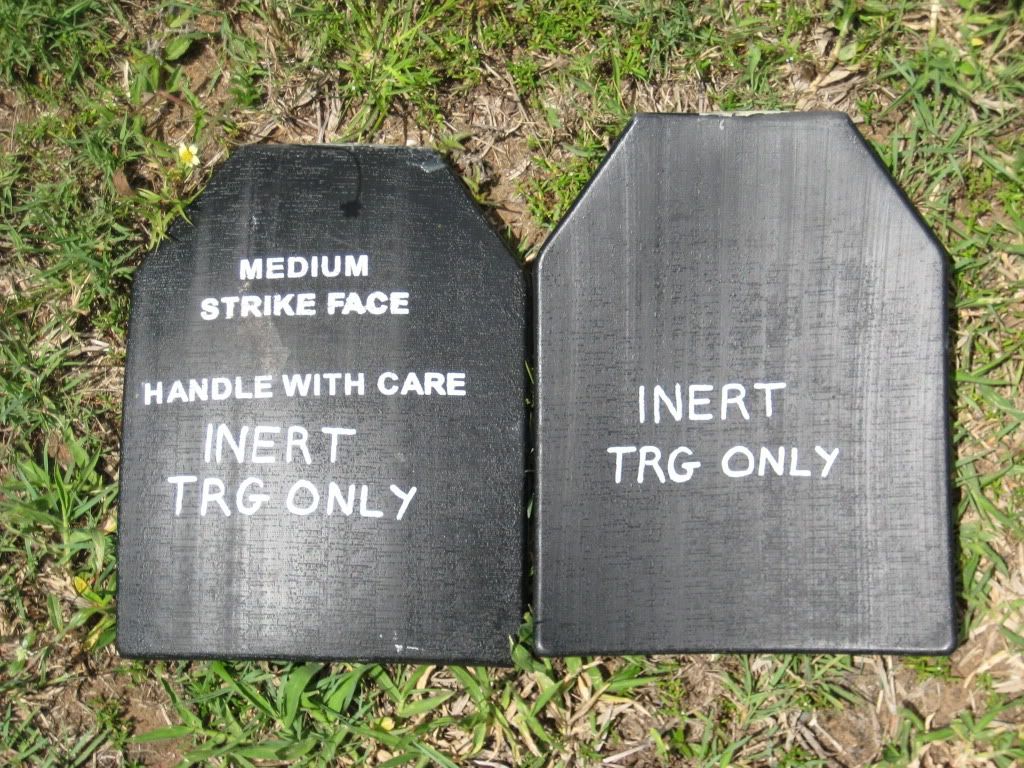

It is acknowledged that these are not a perfect simulation, but it is hoped to at least give a fair idea about how this carrier will behave with an armour package fitted.
It should also be noted that in Australian service, the MAR-CIRAS (known as the Eagle Marine locally) is issued to SOCOM troops, such as SASR and Commando’s. The word around the campfire is that those units have a preference for products from Eagle and SORD rather than the Australian DMO designed and issued items due to quality issues.
MATERIALS:
The external surface of the MAR-CIRAS armour carrier is 1000D cordura.
Inside is a mesh liner, intended for air-wicking.
The cummerbunds are elastic.
Quality of materials is extremely high, as is construction.
DESCRIPTION/LAYOUT:
A modular releasable armour carrier system. Intended to carry soft armour (Kevlar in a BALCS cut) and ballistic (rifle/Lvl IV) plates if the threat level warrants it.
The modular PALS row’s allows the armour carrier to have the individual combat load attached to the armour carrier if desired.
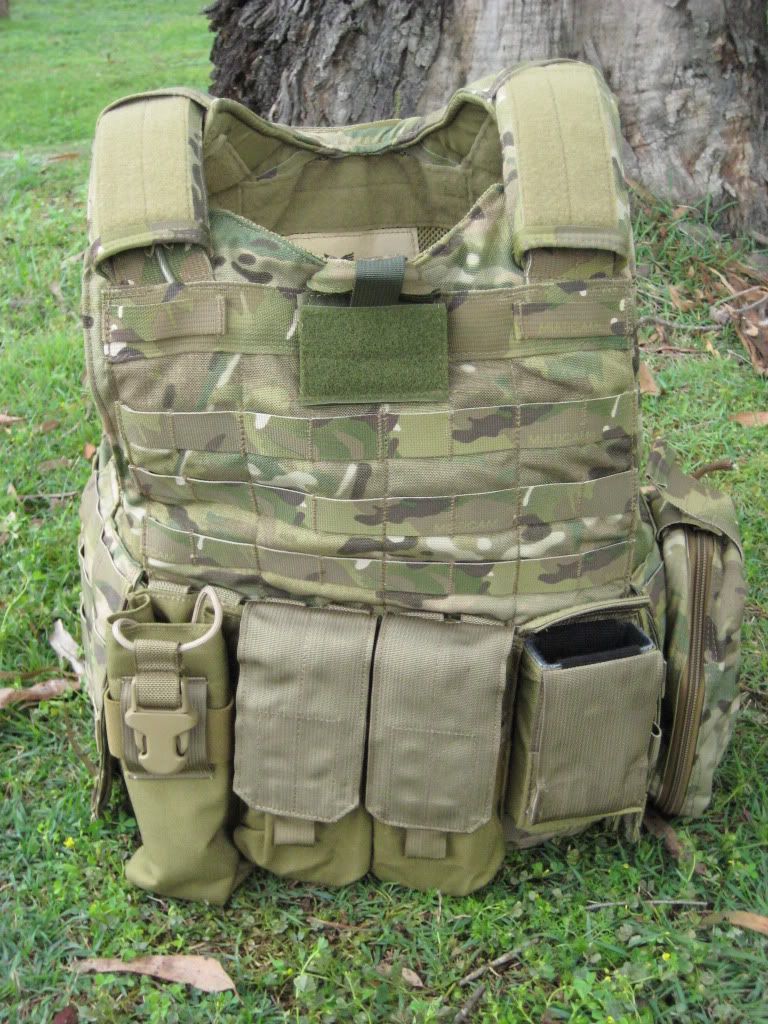


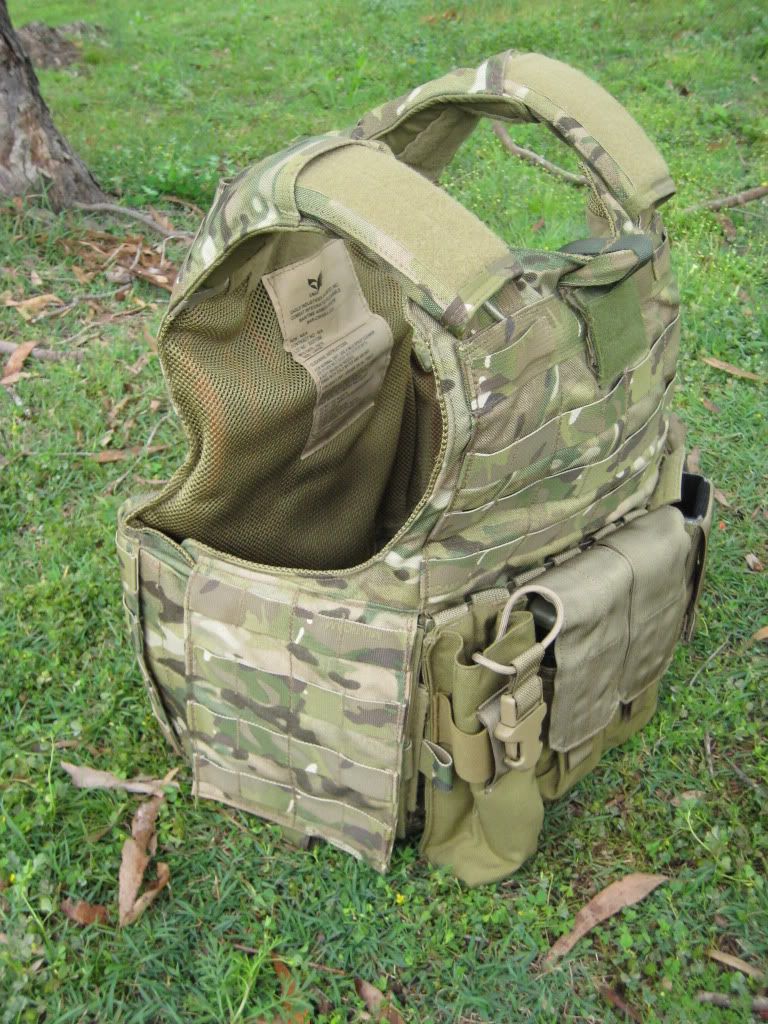
The releasable nature of the CIRAS armour carrier allows for those really bad moments in life when the user must ditch their equipment in a hurry. Such situations as:
– Removing personal equipment for emergency decontamination purposes
– Drowning prevention if one should end up in the drink unintentionally
– Access to casualty for treatment of injuries
The whole package was quite impressive and somewhat daunting to receive. Thankfully, I had some instruction when I first laid eyes on it.
The whole package consists of:
– Vest front portion
– Vest rear portion
– Detachable shoulder pads
– Pull cable (which is a plastic coated wire cable)
– Internal cummerbunds (left and right)
– External cummerbunds (left and right)
– Dacron retaining loop, with a small retention washer.
Carrier exterior:
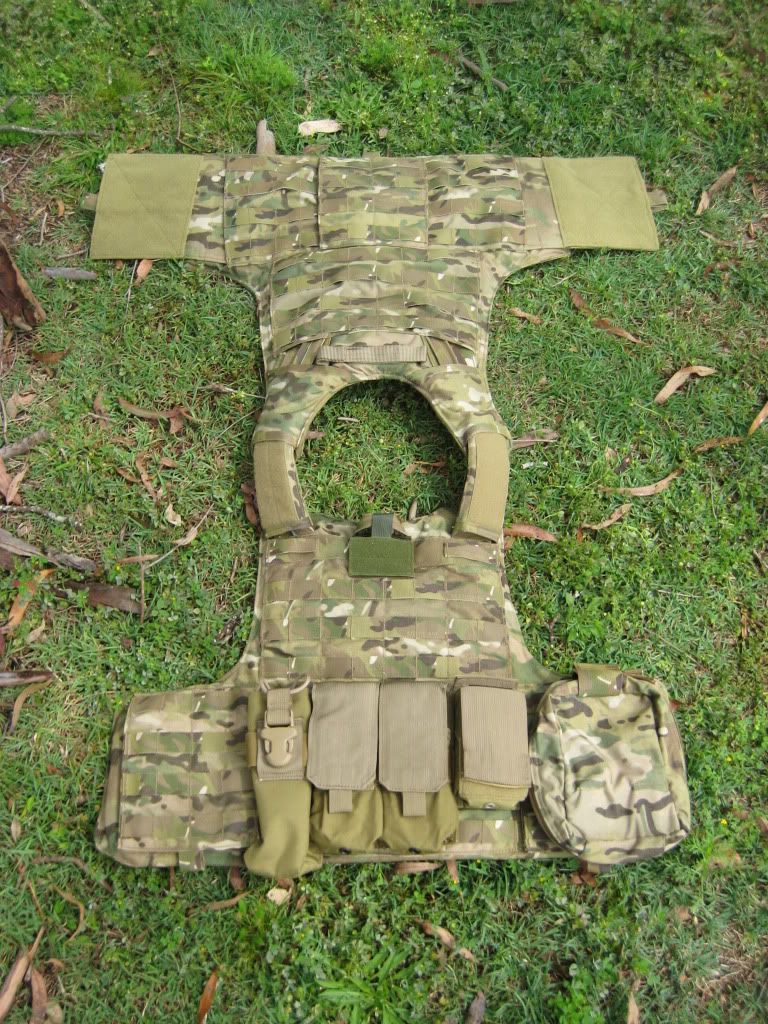
Both the front and back vest portions have a generous amount of PALS rows to hang equipment pouches off. Although it was noticed when attaching pouches (a selection of Eagle pouches provided for review, which will detailed separately), that the outer most PALS channel was significantly narrower than the rest by a few millimetres. This made inserting the tabs through the PALS channels significantly more difficult.
On the front vest portion, on the upper chest, to be bumped by the chin is the quick release pull cable handle. Although I have since worked out to keep the pull handle out of the way by covering it with the safety strap. The release cable itself can be routed up either shoulder (it’s recommended the non-master side away from the rifle butt) and into the small of the back where the entire release system is anchored.
On the rear vest portion, a solid drag handle is provided. It’s Velcro backed to prevent it catching on obstacles. It should be noted that the material for this drag handle is secured under some of the strongest load bearing parts of the armour carrier. It is VERY solid.

PALS rows are also available on the rear vest portion. In addition, there’s a Velcro secured panel in the small of the back that allows access to the whole quick release mechanism.

The two vest portions are secured via shoulder straps attached to the front vest portion. When worn, the inner and outer cummerbunds (which are generally left together as far as I can determine, but can be individually adjusted at the release mechanism) are wrapped around the front of the vest to be locked in place via large Velcro panels on the front vest portion. Fully sealed up, the armour carrier ensures that the BALCS cut soft armour overlaps on the sides of the body over the ribs, ensuring maximum protection.
Under view of inner/outer cummerbund:
Outer view of inner/outer cummerbund:
Carrier interior:
Inside the vest portions are where the real construction is revealed. On front and rear vest portions is a large area of mesh secured with Velcro. This is how the armour package is secured in the carrier.
There are pockets in the front and rear vest portions for secure placement of rifle plates in the carrier.
Under the shoulder portions of the vest rear portion is pile sections of Velcro. I can see where one section would be used for user ID patches that would be covered when worn. The rest of the pile section on the shoulders confuses me. My thoughts it might interface with a combat shirt or other equipment, or simply to improve comfort levels and prevent abrasion from the 1000D cordura on high contact areas of the wearer.
The whole construction of the MAR-CIRAS armour carrier is such that all the parts are attached to the vest rear portion. All straps and cummerbunds are fed through the right holes in the vest to marry up at a central point in the small of the back (covered by the previously mentioned access panel) to be secured via the Dacron loop feeding through the sizing holes on all the constituent components. It sounds far more complicated than it is. The simplicity of design is impressive.
Testing by myself has show how good the release mechanism is. When heavily loaded, as would be expected with a combat load carried, the carrier drops free quite nicely, if a little bit slowly. It should be noted that my sample is brand spanking new, and hasn’t been exposed to much field abuse, which would account for this stiffness.
PERSONAL ASSESSMENT:
When I first received the MAR-CIRAS, I assembled and set it up to fit me.
According to information garnered on Lightfighter, the bottom of the carrier should be in line with the belly-button/navel (yes, a lot of navel gazing from me on this one). The top collar of the armour carrier should be in line with the hollow of the throat.
Fortunately for me, this worked out correctly.
It was during this very shallow review that a great deal of theoretical knowledge about armour systems I’ve garnered from people with much more experience and knowledge than myself, have been experienced firsthand and validated. For this, I thank you.
It’s always been a belief of mine, to get as hands on as I can when learning. Partly because I’m a hands-on learner, only able to absorb knowledge if I have a chance to play with an item to my satisfaction. And partly as my training as an industrial scientist. I can’t discuss something, nor manage it effectively unless I have a practical knowledge of what I’m babbling about.
I can now fully appreciate the need for the new fashion of combat shirts with a finely spun merino wool section over the trunk. The heat retention on a rig of this sort would be phenomenal under operational conditions.
I can also fully appreciate the trend and need for pockets on clothing to be re-located from the trunk to the sleeves of the combat shirt to be worn under armour. Accessing anything under the armour vest easily was an impossibility.
The idea of fighting off your mate’s back (spare mags, frags, smokes and other sundries) suddenly makes a huge amount of sense to me with this very noticeable reduction in mobility.
I can now also fully appreciate how an armour carrier will directly affect such simple things as moving, resting, riding in troop carrying vehicles, interactions with equipment like a personal weapon, and other normal activities. I was using a Nerf Recon CS-6 (hey, it’s the only short barrel assault weapon I’m allowed nowadays 😉 ) to examine how a weapon butt interacts with the carrier, and have found a greater appreciation that the armour carrier will affect weapons handling.
It is my thought that some description of butt retaining device, something like a padded ridge that can be fitted via PALS attachment would be something I’d be looking at obtaining if I was to wear the MAR-CIRAS into harm’s way. I seem to recall seeing such a device on the interwebs awhile back, so obviously, others have experienced and thought the same. This would go a great way towards reducing the amount of slippage and increase useability with a shoulder arm. If a dedicated item could not be acquired, something like a small, single PALS channel pouch like a Surefire/pistol mag pouch could be substituted as a “butt catch device” (without straying into a Rule #4 violation, get your mind out of the gutter – dirty little pervert).
Whilst the rubber butt pad fitted to such small arms like the F88 (sorry… AUG) or can be fitted after market to the telescopic stock on such weapons as the M4 series (like the butt pads available from Magpul) would greatly reduce the amount of slippage, I would still want something to “lock-in” the butt. Whether this would work in the real world will require further testing by me. I leave the floor open for those of you with real world experience on this.
For myself, most of my soldiering was done in conventional exercise scenarios with no CBA issued. Mobility and stealth were the primary concerns for our training, as well as the cheapness of the ADF in not issuing CBA until just prior to deployment.
This has significant impacts on how many of us line swine in the ADF conduct our training.
At first, I wore the carrier without *simulated* armour package. To be honest, I cannot for any good reason, think why some people on the errornet would bother to purchase and wear an armour carrier (or plate carrier for that reason) without any armour package in it. It’s obviously designed to have armour fitted. To wear it otherwise is idiotic.
Once I had inserted my soft armour simulacrum, which happened to be some of the finest latex backed merino wool carpet available in the country – can I also add that Australian merino wool is some of the finest in the world. So, do your part for our trade deficit and buy Australian wool products. With the *simulated* armour package I could really start to appreciate how the MAR-CIRAS really is meant to be worn.
An increase in bulkiness was appreciable. The stiffness of the soft armour package started to impact on such simple body movements that I have never experienced before. I could immediately see major impacts on how personal weapon handling would have to be modified. As mentioned, this has significant impacts on how mission rehearsal training is conducted.
It was also noticed that the bulkiness of the carrier would make sitting in a vehicle seat more challenging. There was an appreciable increase of pressure on the lower back when sitting in a conventional seat. Since most troops are now spending increasing amounts of time mounted in armoured vehicles or PMV’s nowadays, this is a concern. In Australian service, vehicle seats such as that found in the Bushmaster and Landrover are very small, and are clearly not intended to carry troops wearing bulky combat loads. After having spent a few hours stuck in the seat of a Bushmaster before, bereft of fighting load, I was less than impressed with how things would have been had I been wearing my fighting rig.
I thought I was used to limited space after having spent a few years stuffed in the back of a M113 series APC, but the Bushmaster seats were something else.
It became apparent at this stage that the armour carrier had an interesting design point. The way the carrier sat on my frame, minus a combat load, it became obvious that the ideal resting point was on the rear vest portion, intended to carry a decent load on the chest in as much comfort as possible.
Loading it with the simulated plates was another matter entirely. I found the whole rig to lose any of the flexibility and comfort during wearing. The plates managed to circumvent a great deal of upper body movement.
To be honest, with plates in, the rig went from “Geez, I’m rather glad I don’t wear this everyday” to “Holy snap Batman. Thank the bloody Dark Lords I never had to wear this”.
I put an Eagle Yote pack (separate review to be completed in the near future) with 3L hydration bladder and other odds and sods in there to simulate the weight carried on patrol. It sat nicely on the armour carrier, and provided it wasn’t too heavily loaded, didn’t change the balance point too much.
I’m not going to lie, since I’m still recovering from illness, I didn’t load this carrier up with most of the kit I used to carry when serving. What I did load up with weighed in excess of 15kg’s (approx. 33lbs). Items I did load up included:
– 2x 1kg handweights in the Eagle ammunition pouches
– 3L of water in the Yote
– weapon cleaning kit
– some optics
– an old U/S (UnServiceable) UHF hand held CB radio to simulate PRR/MBITR
– Surefire 6P
– IFAK in the Eagle IFAK pouch
– Kevlar helmet and goggles
So much weight in the fighting load scared me. That’s a bit of weight to be wearing in a shoulder load.
Since I’ve lost so much fitness lately, I could really feel the affect on the lower back from this armour carrier.
Putting a pack on was interesting. Trying to put a pack that wasn’t designed for wearing in conjunction with CBA, comfort was absolutely shocking. With a pack that was actually designed to accommodate such things as CBA, such as some of the Mystery Ranch Packs I’ve been supplied to review, the comfort levels were much higher, despite the hard plates in the rig.
One small point I noticed with this rig. After having done more than a few man-down drills over the years, where the harness of the belt webbing would be grabbed and the *simulated* wounded man would be dragged from the contact zone (have you ever noticed it’s ALWAYS the biggest bloke that has to be dragged??) I noticed a difference to what I would be expecting with the patient.
Years ago, when we would drag the casualty out by their belt webbing harness, the casualty’s head would bounce and loll around unsupported. On exercise, this meant a few banged heads as they were dragged through the scrub collecting trees post haste. For some of us, this helped knock some sense into our thick heads.
I noticed that the stiffness of the armour carrier aids in protecting the casualty a great deal. As the drag handle is used, the carrier will ride up, connecting with the arm-pits. This means that the stiff shoulder harness (which could be used as drag handles as well) rise up and lock the casualty’s head into place, and could conceivably help maintain a clear airway.
My experience of looking at systems holistically, would suggest that whilst this from all accounts an excellent piece of equipment, it’s still designed in isolation from any other pieces of equipment like weapons, radios, other load bearing equipment like packs to better allow the wearer to do their job and balance the tough equation between protection, mobility, and carrying capacity.
If a holistic load carrying system is to be designed and fielded (as is occurring apparently in the ADF as this review was written and published) then the body armour carrier will need to be the centre-piece of the load bearing system that every other survival, fighting and sustainment item needs to be hung from and interact with. This means that interaction and ergonomics with the body will need to be considered.
PROS –
Extremely well made rig. The construction is very solid.
Comfort of this carrier is higher than the other two CBA rigs I’ve had opportunity to examine/wear on a casual basis before.
My first exposure to CBA was the Australian issued vest (very similar to a simple flack jacket) in the late 1990’s, during the initial Timor Leste deployment period. It was a very simple vest, secured via two large fastex buckles on the sides. It was fairly uncomfortable, nor was it overly compatible with any other equipment. No capacity to mount pouches was available, nor was there any method to upgrade the armour package to include Lvl IV plates.
I have had opportunity to examine the latest issue LAND125 rig. I’m not sure if it was MCBAS or the original Land125 project CBA vest. Suffice to say, it had an elastic cummerbund design that secured around the belly, then the front layer of armour was secured over the top of the cummerbund. I wasn’t impressed with that design. Although if memory serves correctly, the armour package is BALCS cut.
I’ve also had opportunity for casual examination of the Queensland Police Service non-concealable vest, intended for putting on under stressful situations several years ago. This was almost exactly same as the first ADF CBA vest I’d been exposed to.
The MAR-CIRAS, with its large Velcro panels securing the cummerbund to the vest, rather than the wearer seems to be a better solution to what I have seen previously. The design allows the wearer a great deal of lee-way and flexibility to set up their combat load for ideal configuration. The inner and outer cummerbunds seem to work somewhat as a differential cut to allow for an odd shape like the human body.
CONS –
The design seems to be shoulder loading. I’m not entirely sure if I have the system rigged up properly. In my eyes, this could lead to problems carrying a decent combat load comfortably.
Since the entire basic fighting load could be approaching 20kg’s (approx 44lbs), consisting only of armour, a basic first line of ammunition, water, explosives, PRR and basic survival/admin items for a rifleman, let alone any specialist roles, this is starting to approach a situation where fatigue and strain could/should be avoided in the design of the next generation of integrated combat load bearing equipment.
There is also a smaller issue inside the vest. It seems the design could benefit from some gains in ergonomics and kinaesthesia (fitting materials to the human frame).
In other areas, and earlier in this review, I’ve banged on about a differential cut with different circumferences. In stuff like sleeping bags, this differential cut allows for other materials like down fill to properly fill the space and perform to the best of it’s ability.
It’s something that has gotten me thinking, that a differential cut to this armour carrier would benefit it somewhat. It would allow for the armour package to sit in the carrier in a more efficient manner, allowing less “bunching” of the internal materials which would increase comfort levels to the wearer. Although it should be noted that this differential cut is negated if the soft armour isn’t differentially cut as well.
There also seems to be a few problems integrating this armour carrier with a pack. I’ve now gained a very important and practical insight into why pack manufacturers and designers have had to change their harness designs for wearing with CBA. Mind you, I had a theoretical appreciation of this knowledge before conducting this review, but now I’ve had some practical exposure to the problems.
SUMMARY:
This review has left me feeling like Alice in Wonderland, wandering through a world that I have very little knowledge about. It’s definitely been a journey.
I now have a better appreciation of why the MAR-CIRAS is considered a market leader in current technology. I’m now extremely interested in comparing this to other entries in the market.
I also now have some lines of thought for improvement of the design, or the design of a new armour carrier.
Posted in Packs & Webbing by 22F with 2 comments.

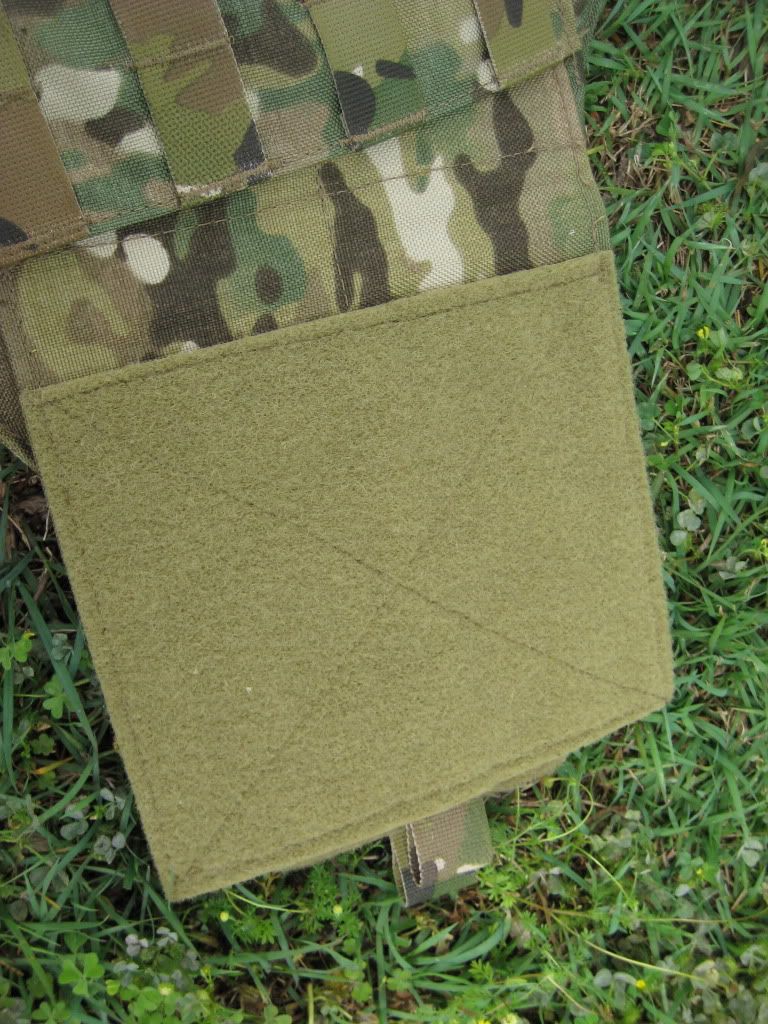
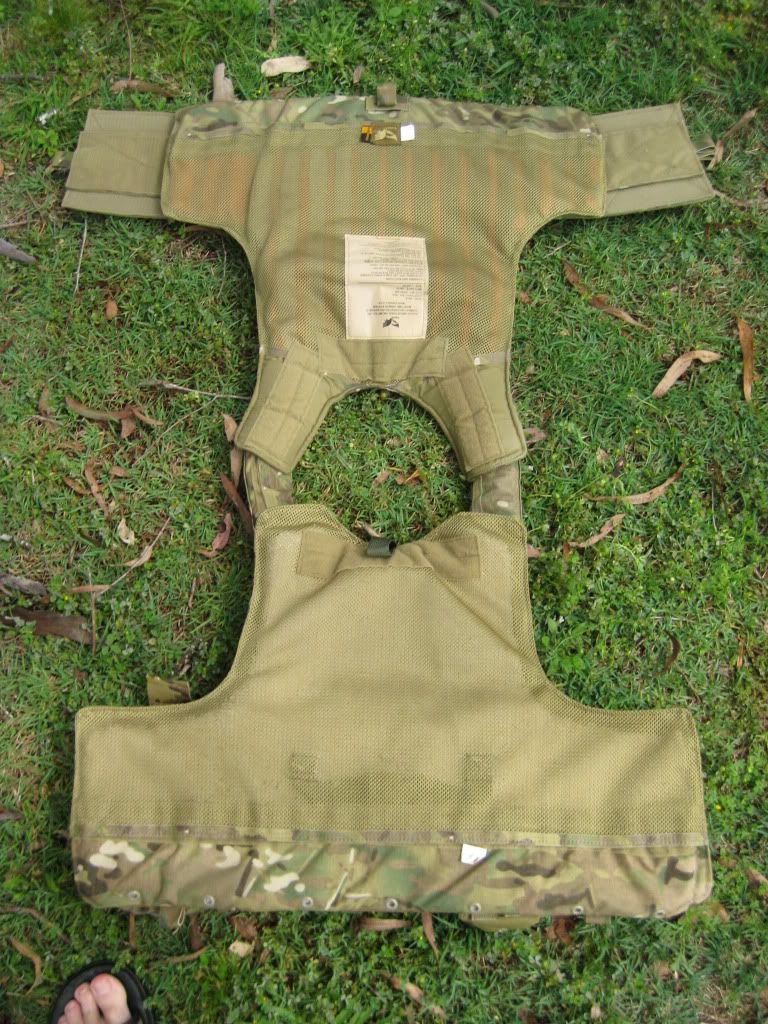

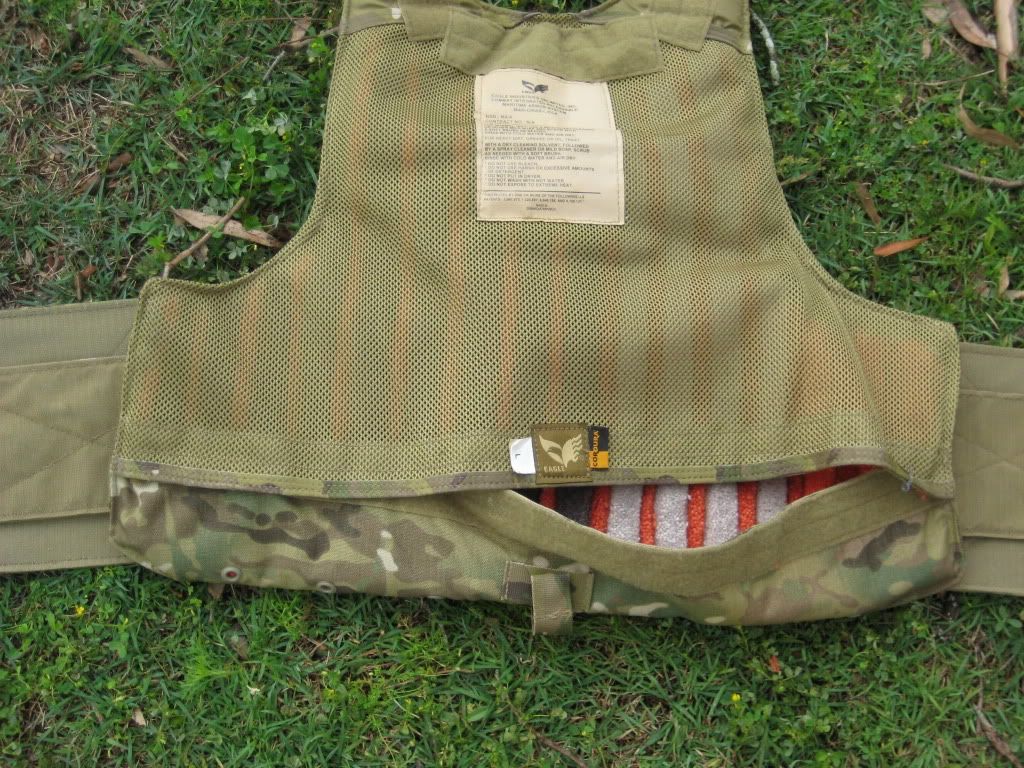
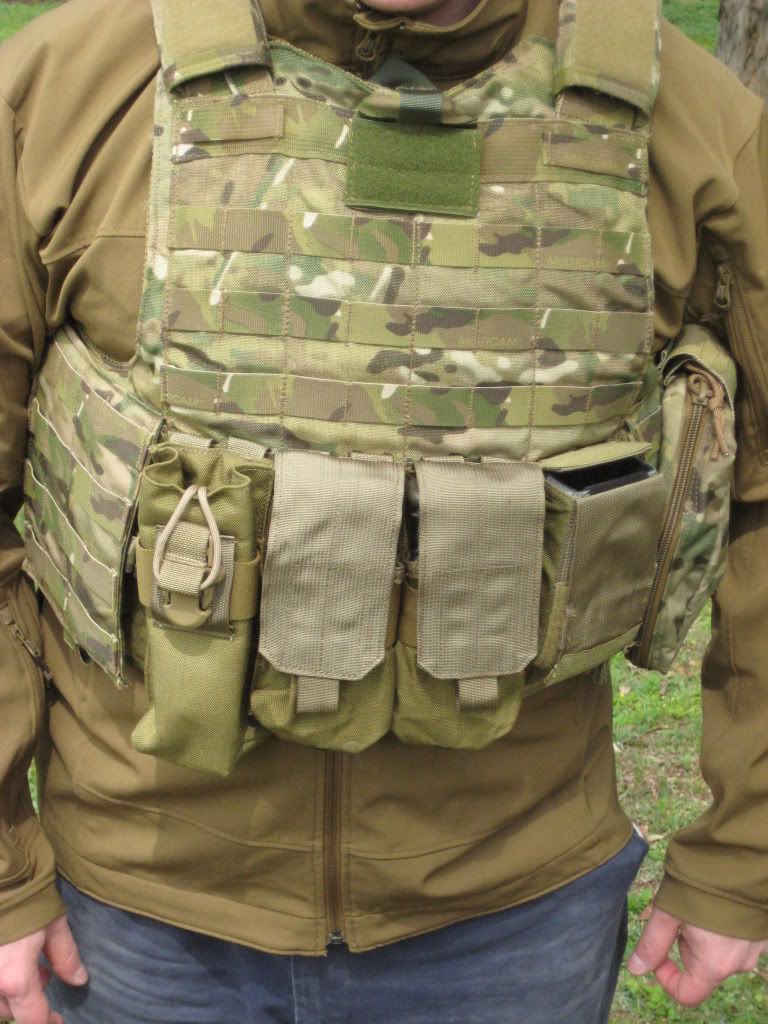
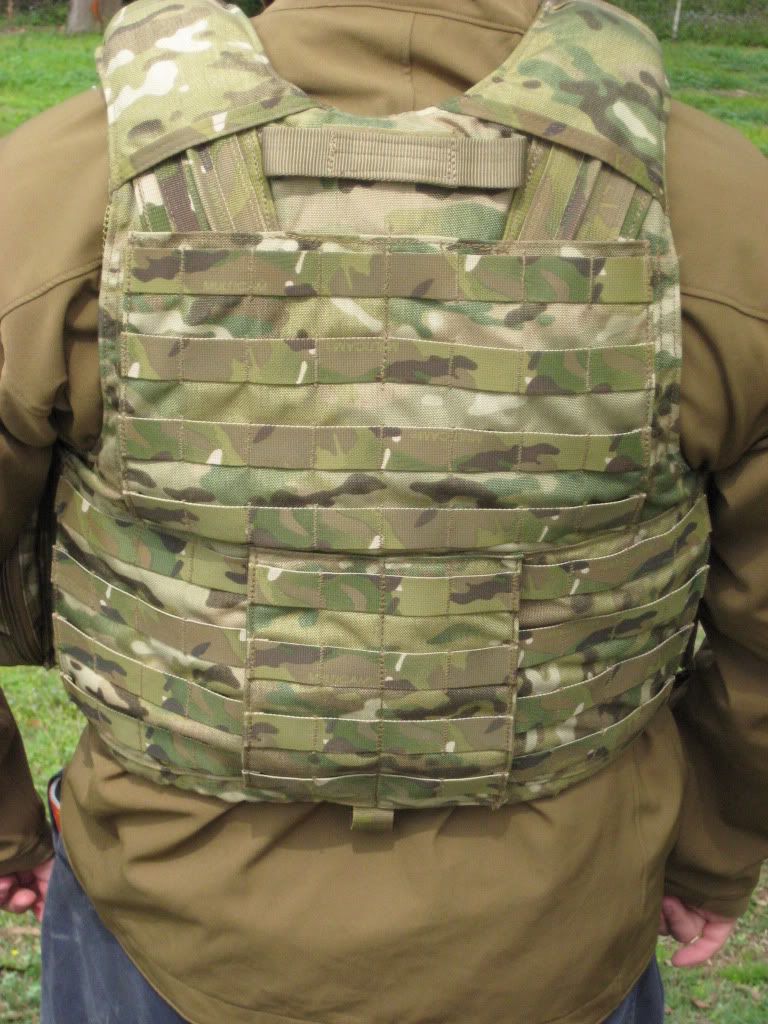
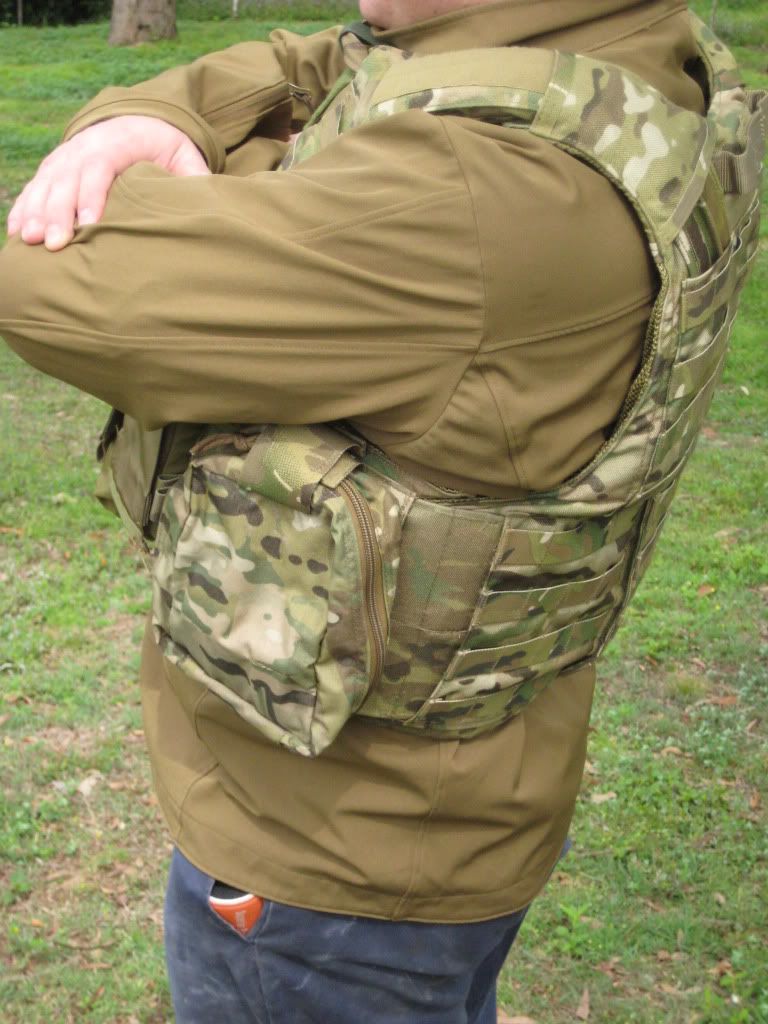

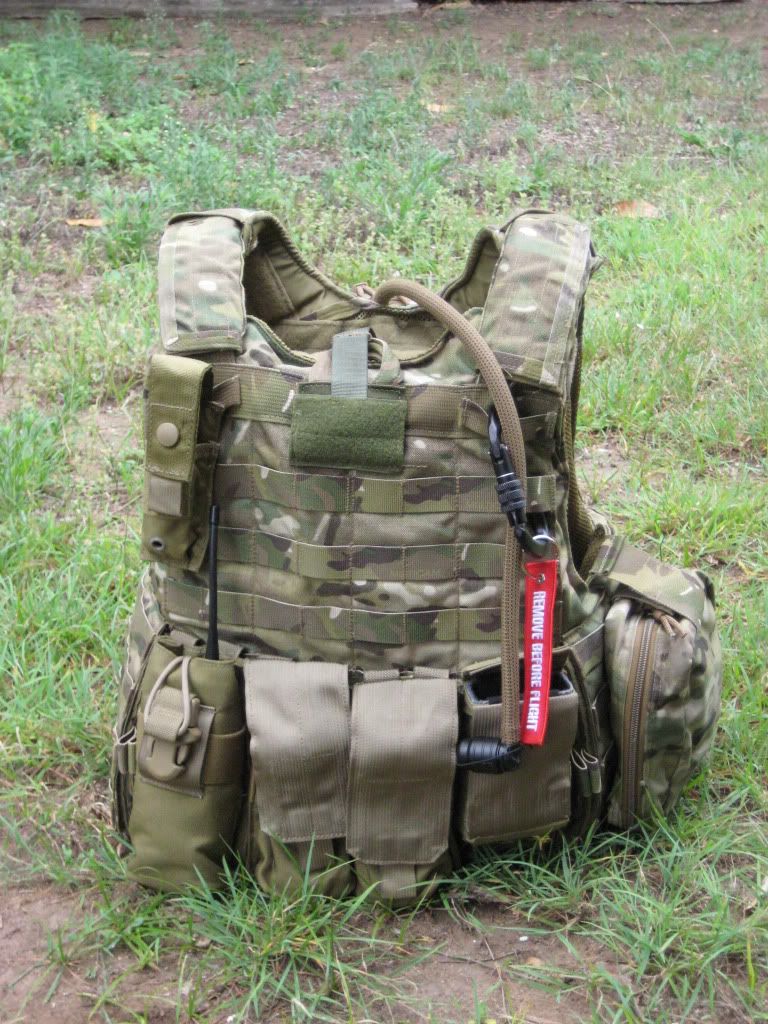


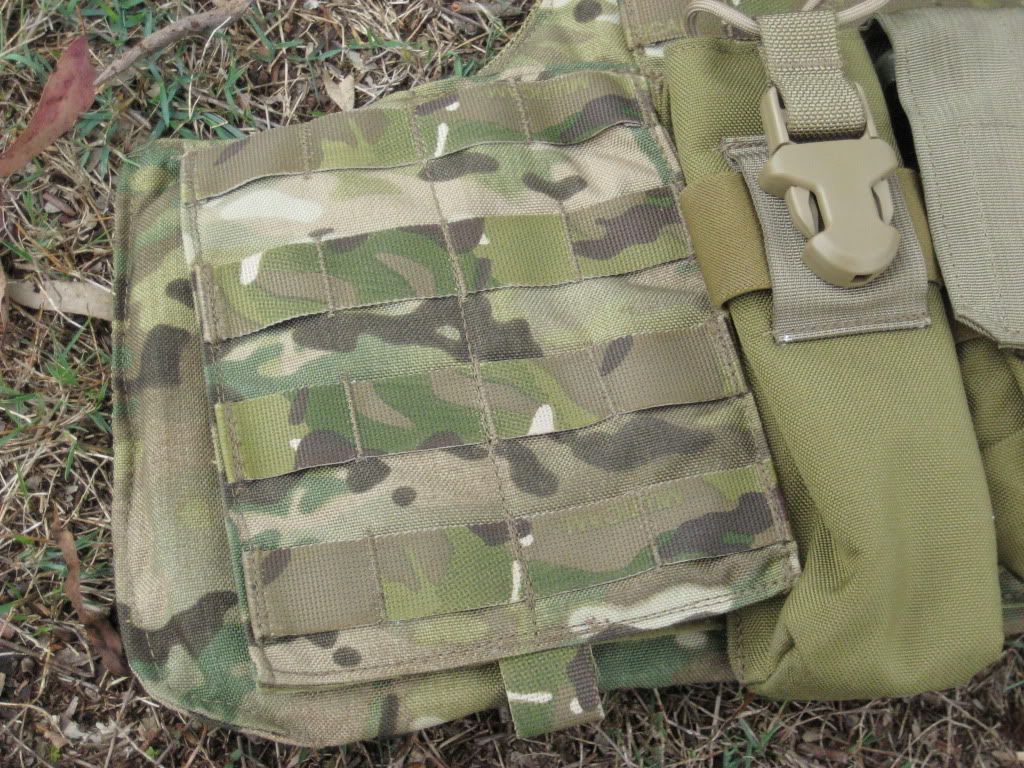
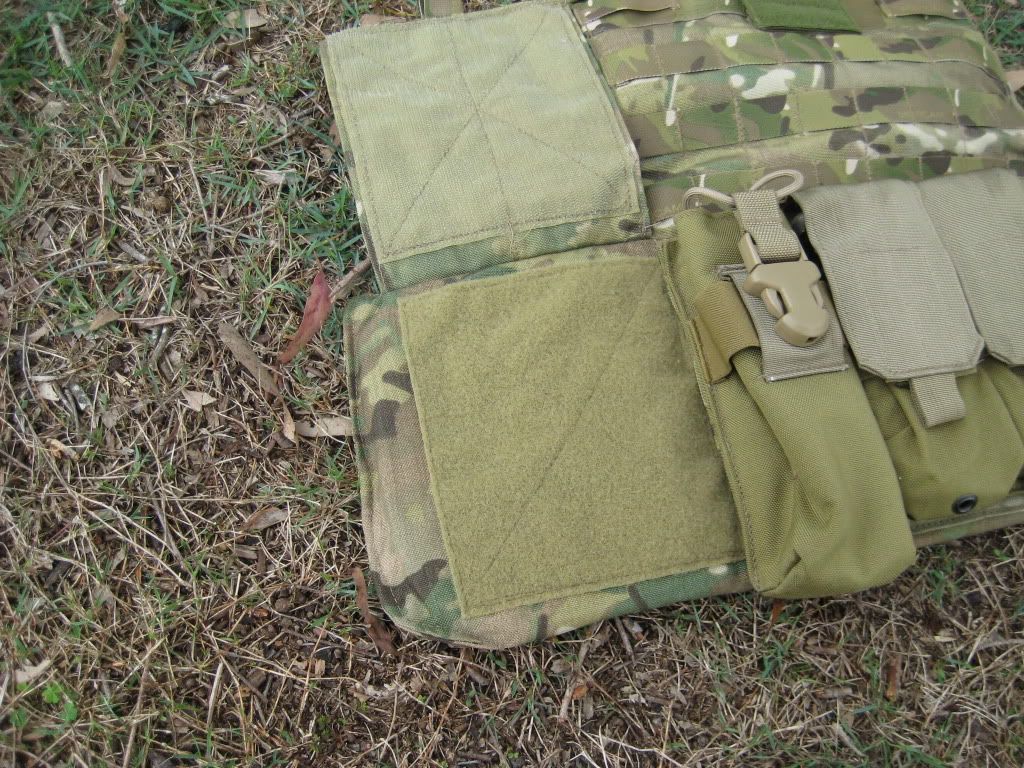
Leave a Reply